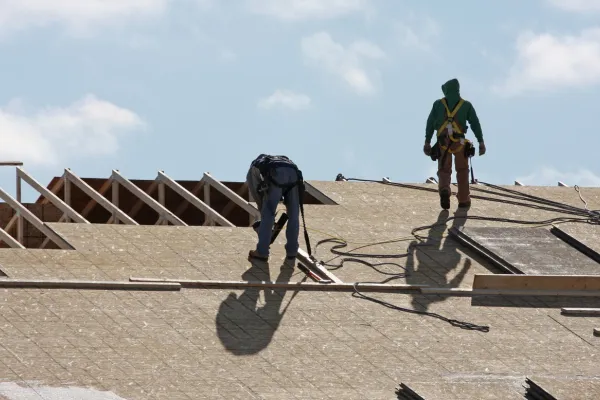
Roof Replacement
Why Roof Replacement is Essential for Your Home's Longevity
Your roof is the first line of defense against the elements, playing a critical role in protecting your home’s structural integrity. Over time, however, even the most well-maintained roofs will wear out, leaving your home vulnerable to damage. While the idea of a full roof replacement might seem daunting and costly, it’s an investment that pays off by ensuring your home’s safety, efficiency, and value for years to come.

Why Roof Replacement is Important
1. Protect Your Home from Damage
An aging or damaged roof can lead to leaks, water damage, and even mold growth. These issues can spread beyond your roof to your walls, ceilings, and insulation, causing extensive—and expensive—damage. Replacing your roof before these problems arise can save you from costly repairs and keep your home dry and secure.
2. Improve Energy Efficiency
Old roofs often lack proper insulation and ventilation, leading to increased energy bills. Modern roofing materials are designed to be energy-efficient, helping to maintain a stable indoor temperature by reducing heat loss in the winter and keeping your home cooler in the summer. By investing in a roof replacement, you can improve your home’s energy efficiency, lower your utility bills, and make your home more eco-friendly.
3. Increase Your Home’s Value
One of the biggest benefits of a new roof is the boost it gives to your home’s curb appeal and market value. A well-maintained roof is a key selling point for potential buyers, signaling that your home is structurally sound and protected. In fact, a roof replacement can provide a significant return on investment (ROI) when it comes time to sell your home.
Key Signs You Need a Roof Replacement
Not sure if it’s time to replace your roof? Here are the top signs to look out for:
Missing, Cracked, or Curling Shingles: Shingles that are damaged or missing altogether leave your roof vulnerable to the elements. If you notice widespread shingle issues, it’s time to consider a replacement.
Frequent Leaks or Water Damage: If you’re constantly dealing with roof leaks or notice water stains on your ceilings or walls, these are red flags that your roof may no longer be watertight.
Visible Sagging or Structural Issues: A sagging roof is a serious issue that indicates structural damage. If you see any sagging spots, contact a professional roofer immediately to assess the damage.
Roof Age: Most roofs last between 20 to 25 years. If your roof is approaching or surpassing this age, it’s time to plan for a replacement before issues arise.
Investing in Your Home’s Future
A roof replacement is more than just a necessary expense; it’s an investment in your home’s long-term health, safety, and value. By staying proactive and replacing your roof when needed, you can avoid more significant repairs down the line, enhance your home’s energy efficiency, and boost its market value. If your roof is showing signs of wear and tear, don’t wait—contact a professional roofing contractor to discuss your replacement options today.
Keywords: Roof replacement, Home's structural integrity, Roofing contractor, Roof repair vs replacement, Energy-efficient roofing materials, Roof lifespan, Roof damage, Signs you need a new roof, Increase home value with roof replacement, Roof replacement cost, Roof leaks, Aging roof Water damage from roof, Roof inspection, Benefits of roof replacement, Curb appeal with new roof, Residential roofing, Roofing solutions, Roof maintenance, Roofing contractor near me
